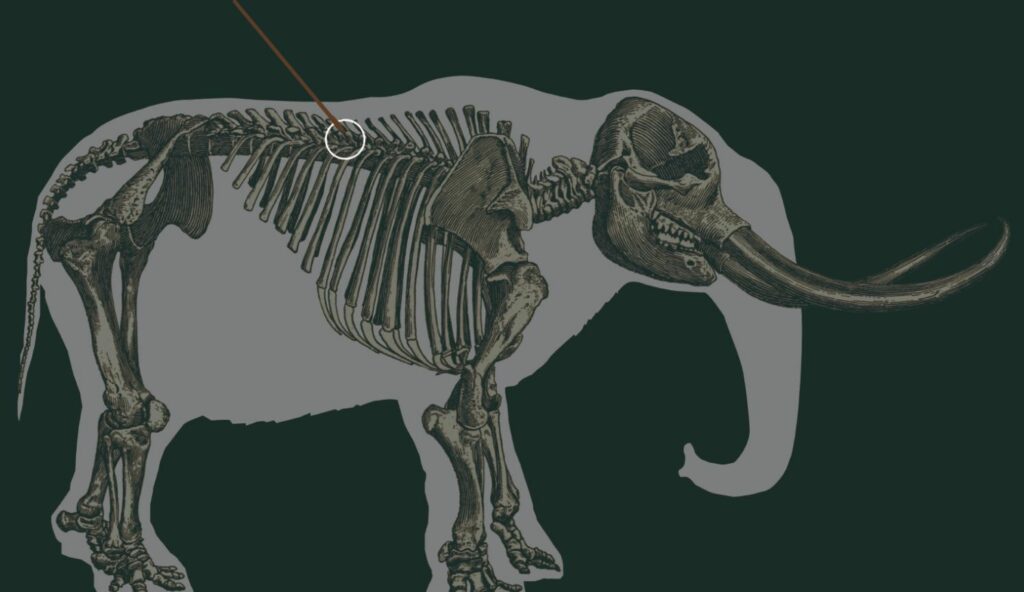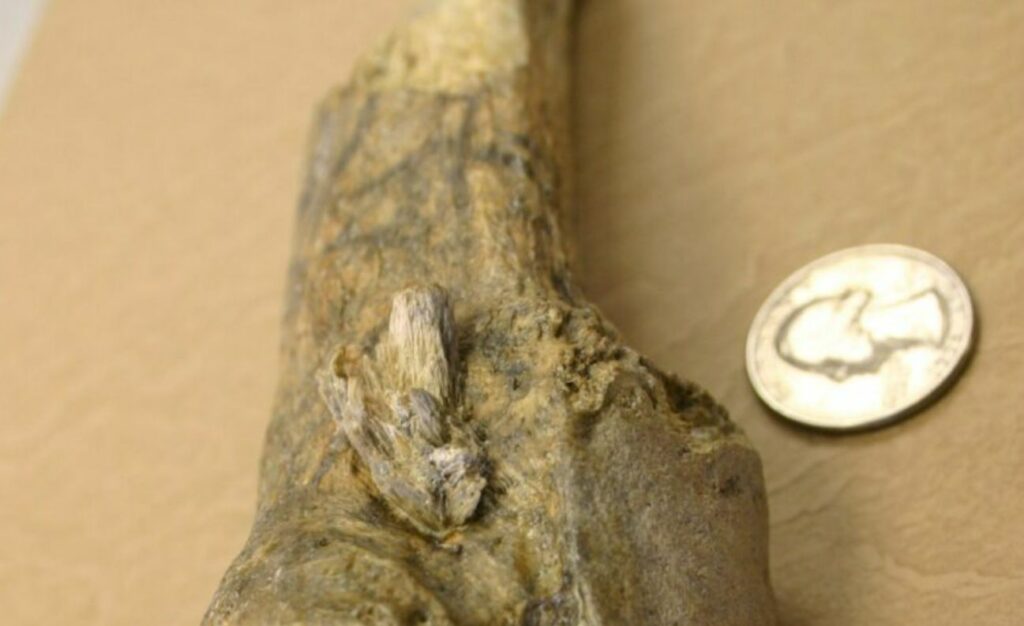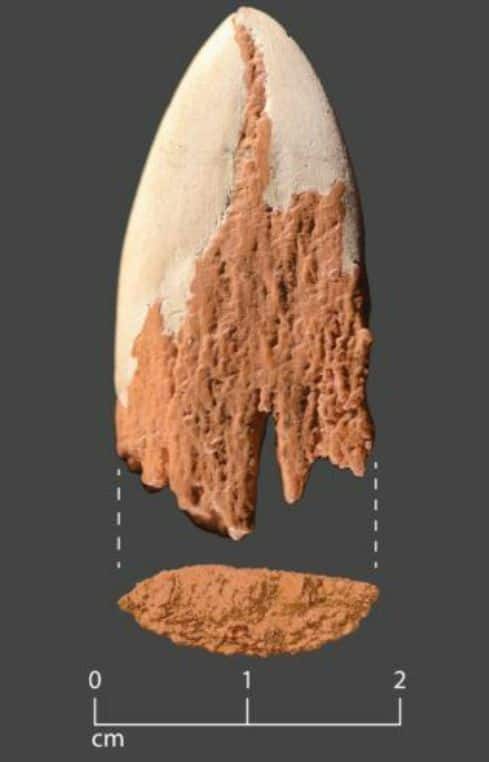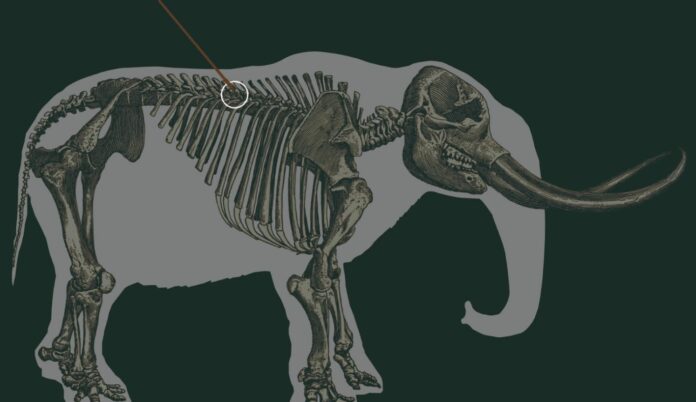Interestingly, the bone used to make the point appears to have come from the leg of another mastodon and was deliberately shaped into the form of a projectile point.
A group of scientists, guided by a Texas A&M professor, has uncovered the Manis bone projectile point as the earliest bone weapon found in the Americas, dating back to 13,900 years.
Dr. Michael Waters, a highly regarded anthropology professor and director of the Center for the Study of First Americans at Texas A&M, oversaw the team, with their results published in this week’s edition of Science Advances.
The researchers conducted an examination of bone fragments lodged in a mastodon rib bone, originally discovered by Carl Gustafson during his 1977-1979 excavation at the Manis site in Washington.
With the help of a CT scan and 3D technology, Waters and his team isolated the fragments, revealing them to be the tip of a bone-made projectile – created from the remains of a mastodon, the prehistoric elephant relative.
They separated the bone fragments, printed them, and put them together, revealing the tip of a bone projectile point.

“This clearly showed this was the tip of a bone projectile point,” says Waters, adding, “this is the oldest bone projectile point in the Americas and represents the oldest direct evidence of mastodon hunting in the Americas.”
According to Waters, who has also researched Clovis stone tools, the Manis point is 13,900 years old, making it 900 years older than projectile points known to be related with the Clovis people. Spear points made by the Clovis people, who lived between 13,050 and 12,750 years ago, have been discovered in Texas and other locations around the US.

“What is important about Manis is that it’s the first and only bone tool that dates older than Clovis. At the other pre-Clovis site, only stone tools are found,” Waters adds. “This shows that the First Americans made and used bone weapons and likely other types of bone tools.”
According to him, the Manis specimen was only preserved because the hunter’s aim was off and the projectile became lodged in the mastodon’s rib.
He added that the bone used to make the point appears to have been taken from the leg bone of another mastodon and deliberately crafted into a projectile form. The hunter had intended to penetrate the hide, tissue, and reach between the ribs to impair the mastodon’s lung function, but missed and hit the rib instead.

Waters has studied the rib bone before. In 2011, he wrote a paper about his findings that was published in Science. Radiocarbon dating was used to figure out how old the bone was, and a genetic study of the bone fragments showed that they were from a mastodon.
With the use of CT scans and 3D modeling software, he said, “in our new study, we set out to isolate the bone fragments.”
They were able to produce 3D representations of each element that were printed at a six-time scale.
“Then we fit the pieces back together to show what the specimen looked like before it entered and splintered in the rib.”

Other than the fact that they were among the earliest Indigenous people to visit the Americas, nothing is known about the people who developed the Manis spear point. Archaeologists are learning more from sites like the Manis one, Waters said.
A boat was likely used by the earliest settlers to reach the Americas, he added. They travelled south along the North Pacific’s coastline. They ultimately made it over the Canadian ice sheets and arrived on the Pacific Northwest coast.
Waters noted that in the Northwestern part of the United States, there is a concentration of early sites, including the 16,000-year-old Coopers Ferry site in Idaho, the 14,100-year-old Paisley Caves in Oregon, and the 13,900-year-old Manis site.
All of these sites pre-date the Clovis culture and are believed to be inhabited by the first humans and their descendants who entered the Americas during the end of the last Ice Age.
Image Credit: Center for the Study of the First Americans, Texas A&M University
